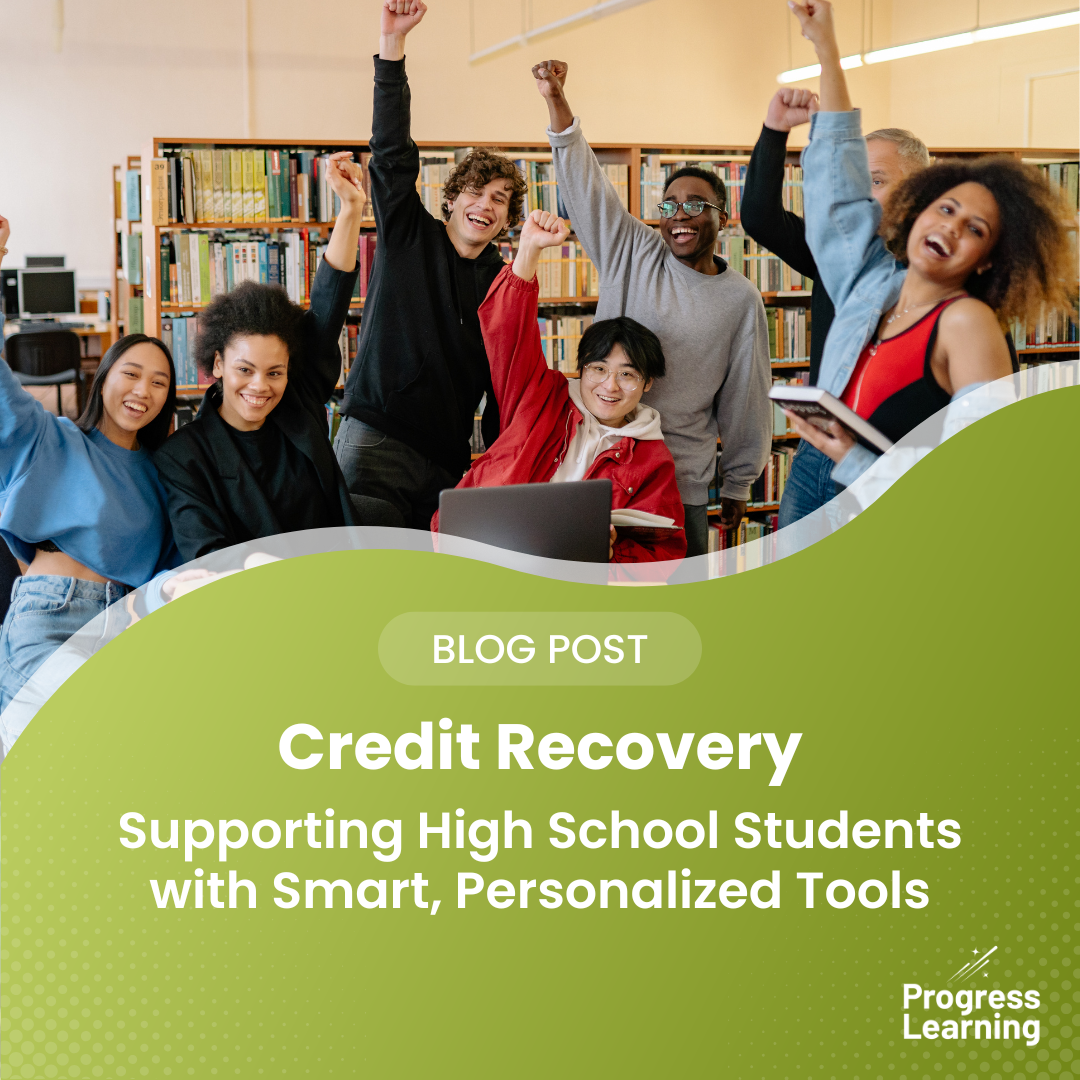Intervention vs Remediation in the Classroom
As educators, our goal is to create meaningful learning experiences that address the diverse needs of our students, each with unique learning requirements. Supporting struggling students often means turning to intervention or remediation strategies. But what do these methods mean, and how do they differ in practice? Intervention is a proactive, targeted approach designed to support students facing academic or behavioral challenges, while remediation is more responsive, focusing on reteaching content that students have previously struggled with. How do these strategies look in the classroom, how do we determine which is most appropriate, and—most importantly—how do we make them practical for our students? This post aims to move beyond basic definitions and high-level pedagogy, delving into the practical application of intervention and remediation to support all students.
Understanding Intervention
Bottom-line interventions are proactive. The goal is to address potential academic or behavioral issues before they become significant barriers to learning. Early identification, targeted support plans, and data-driven monitoring are essential for the success of interventions. Students who benefit from interventions usually exhibit specific academic struggles in areas like reading, math, or writing and behavioral challenges that impede their learning progress. Many of these students are not meeting grade-level expectations in regular classroom instruction and could benefit from additional, targeted support to address specific needs.
Two popular models for implementing interventions are Response to Intervention (RTI) and the Multi-Tiered System of Support (MTSS). RTI measures students’ skills and uses the data to determine appropriate interventions. MTSS builds on RTI by addressing the whole student and supporting academic, behavioral, social, and emotional needs. Both systems utilize a three-tiered approach to interventions. Let’s examine intervention through Mrs. White’s hypothetical sixth-grade classroom.
Mrs. White is very knowledgeable in implementing high-quality math instruction, including frequent student monitoring. Mrs. White begins class with a whole group lesson introducing the topic of the day; she then moves into a small-group rotational instruction model where Group 1 receives differentiated instruction, Group 2 engages in an activities center aimed at the learning target, and Group 3 completes independent practice activities that support and strengthen the skill taught during whole- and small group instruction. Mrs. White ensures the rotation of groups allows Group 1 (the lower-performing group) and Group 2 (the average-performing group) to receive their independent practice immediately after small-group instruction.
Meanwhile, the students in Group 3 (the highest-performing group) work independently before their small-group instruction. Mrs. White collects data during each rotation to inform future groupings and rotation plans. These are all examples of Tier 1 interventions. Tier 1 interventions are known as basic-level interventions, where students need basic support that can be obtained in the regular classroom through proven high-quality instructional practices.
After six weeks of instruction, Mrs. White’s progress monitoring shows that five students are not making adequate progress and determined they would benefit from supplemental Tier 2 interventions. Mr. Thompson is assigned to push into Mrs. White’s class to support the five students who need additional support. Mr. Thompson provides high-quality Tier 2 instruction three times a week for 30 minutes during Mrs. White’s class. Mr. Thompson will conduct weekly progress monitoring and collaborate with Mrs. White to make decisions about the student’s instructional needs.
After a few more weeks, the two will determine if the student should only receive Tier 1 instruction, an additional round of Tier 2 intervention, or whether they need more specialized intervention provided by Tier 3. Tier 2 interventions are known as concentrated level interventions, where students are usually one grade level behind and need additional support beyond basic interventions, which can be delivered through small groups and targeted supplemental instruction of specific skills or concepts.
After using the data gathered in Tier 1 and Tier 2 interventions, one student in Mrs. White’s class has not made progress and is recommended for Tier 3 support provided by the special education program at Stanley Middle School. Students at Tier 3 are usually more than one grade level behind and require intensive specialized intervention with one-to-one instruction outside of the classroom. Tier 3 instruction is tailored to individualized goals, potentially differing from grade-level standards, guided by progress monitoring data, and typically more intensive with longer or more frequent sessions than Tier 2.
Understanding Remediation
Remediation is reactive and is simply reteaching material. Remediation is meant to prevent students from needing more targeted intervention in the future. The need for reteaching can be found through formative assessments that illuminate misconceptions or gaps in most students’ learning that was previously taught in a previous grade level or a specific lesson. Most educators employ some level of informal remediation in their daily lessons, such as reviewing material again or refreshing students on an old skill. Let’s revisit Mrs. White’s class.
Mrs. White teaches a lesson on fractions and their operations. Upon reviewing her student’s formative assessments and observing their difficulties, Mrs. White identified that these students did not fully retain the skill of multiplying fractions from fifth grade. To address this, she created a series of reteach lessons explicitly focused on multiplying fractions.
The lesson begins with a review of basic fraction multiplication principles, followed by guided practice exercises and interactive activities to reinforce understanding. Mrs. White gives another formative assessment of this skill to determine if students are ready to proceed with the original objective. By revisiting and solidifying this foundational skill, Mrs. White aims to better prepare students for mastering more advanced fraction concepts and problem-solving tasks in sixth-grade math. This is remediation.
Comparing and Contrasting Intervention and Remediation
| INTERVENTION | SIMILARITIES | REMEDIATION |
| Proactive approach to prevent academic or behavioral issues | Support student success | Reactive approach to address specific skills or content students haven’t mastered |
| Implemented early to prevent learning gaps | Require ongoing assessment and readjustment | Implemented after identification of learning deficiencies |
| Targets broad range of academic and behavioral needs | Involve additional instructional time and resources | Focuses on specific academic skills or content areas |
| Uses assessment data, teacher referrals, and screening tools to identify and support students | Involve collaboration between educators, specialists, and sometimes parents to develop and implement effective strategies | Relies on diagnostic assessments and targeted instruction to reteach and reinforce skills |
Exploring Acceleration
Acceleration is a complementary strategy to intervention and remediation. Acceleration differs from intervention and remediation by focusing on teaching grade-level material while quickly addressing any gaps in fundamental understanding as they arise.
Unlike intervention, which targets specific academic or behavioral needs, and remediation, which reteaches previously unmastered content, acceleration aims to keep students engaged with current grade-level content. Acceleration can be used alongside intervention and remediation by incorporating targeted support and reteaching strategies when necessary, ensuring that students do not fall behind while still challenging them with grade-level material. This approach promotes a balanced, responsive educational experience that addresses individual student needs comprehensively. Once again, let’s explore an example from Mrs. White’s classroom.
Mrs. White’s math class is learning about ratios and proportions. Mrs. White notices that a few students are struggling with the necessary multiplication and division skills. To accelerate their learning, she integrates quick, targeted mini-lessons on these foundational skills into the current curriculum. This allows students to address their gaps without pausing the grade-level material, ensuring they stay engaged and keep up with the class.
Understanding and effectively implementing intervention, remediation, and acceleration strategies are vital for supporting the diverse needs of all students. Educators can create a comprehensive and responsive learning environment by proactively addressing academic and behavioral challenges through targeted interventions, reteaching essential skills through remediation, and maintaining engagement with grade-level content through acceleration. These approaches, grounded in data and collaboration, ensure that every student has the opportunity to succeed and thrive. Ultimately, the goal is to provide meaningful, individualized support that meets students where they are and helps them reach their full potential.


